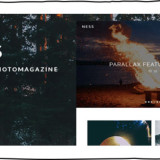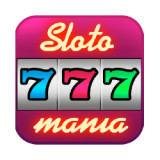Head To Head Comparison Of Two Great WP Themes: Divi 2.0 And Salient
The days when web designing was only for web professionals are pretty much gone. As people’s interest in the area grows, more and more developers focus on offering the general public affordable and accessible software to let individuals easily create personalized websites.
There are a lot of resources that a designer can use to create websites, but few of them that are also for regular people that don’t know how to create a nice theme design.
My choices were cut down to only two, which seem the most accessible, easy to use and prompt theme creators to be found on the market. Both are popular, highly used and extremely customizable without requiring any sort of coding skills.
Divi
Divi is Elegant Themes’ response to DIY web design. Released at the end of 2013, it was considered a real breakthrough in its area, and all in good reason.
Its interface, the Divi Builder, was like nothing seen before. Highly interactive, it had an entirely new approach to constructing a website, making it the first theme to actually combine with ease the intricacies and elegance of award-wining web designs with an interface that’s as user-friendly as possible.
How does it work? It just splits the dashboard into separate layers, making the elements interchangeable. It might seem too simple to those or are used to coding, but mind you, it’s not. Its complexity consists in the varied number of elements it offers, rather than the building tools it uses.
You can fully customize each one of these, also decide which ones are keepers and which are not. Modules can be added (similar to the widgets in WordPress), only more dynamic and customizable.
And in its second version, Divi 2.0, it offers even more features that are useful and make your life easier as a designer, or as a simple site owner.
Every single step of the process can be done by dragging and dropping, making even the newbies as efficient as possible. It supports Woo Commerce to accommodate the needs of those interested in freelancing and contains various layouts for your personalized blog or e-store.
In this sense, it comes with 10 pre-made layouts that you can easily modify. If not, you can just build everything from the ground up. It’s compatible with all sorts of devices, mobile ones included.
With Divi 2.0 come some extra look finesse elements: a redesigned header, different navigation and more layout options for a touch of variety.
I find the prices to be fair since you also get a package of 87 themes for $69. Also full updates and technical support are included.
Salient
Salient is a very eye-catching theme, that’s the first obvious thing to notice. It comes with a big language pack in order to accommodate the needs of those who are far from fluent in English.
It supports retina ready, and it has a feature that I find worth mentioning: it comes with a Parallax home slider. This is useful, as good sliding plugins are really hard to come by, as many of you already know.
Like its counterpart Divi, Salient also comes fully equipped for those who are interested in freelancing work, offering support for the Woo Commerce plug-in for everybody who is in need of an online store.
Unlike Divi however, it only offers 8 layouts to chose from and the customization process is not as interactive since it requires shortcodes. But they offer detailed tutorials in the matter, in both text and video format.
Overall it is a good looking theme, with a really good customer support services, but it is stand-alone, all at a price of $55.
Conclusion
If you ask me these are the best themes on the market, flexible, responsive and able to provide everything a user might need to create his very own e-ambient. Both are competitive and fully respond and operate on every platform and device out there, but in my book Divi’s builder it’s what sets it apart from every other product, since it’s the easiest and most interactive.













